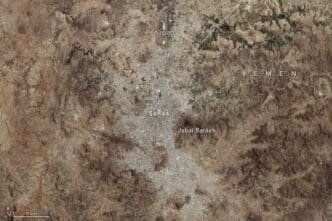A recent study revealed significant disparities in green space cooling capacities between cities in the Global North and South, using NASA data.
Urban environments, characterized by their concrete and asphalt, are known to amplify heat—a phenomenon commonly referred to as the urban heat island effect. This effect results in urban regions experiencing higher temperatures than their rural counterparts. The recent study published in the journal Nature Communications highlights the importance of green spaces in mitigating this heat. Utilizing NASA’s satellite data, researchers demonstrated that greenery can substantially lower urban temperatures, providing much-needed relief during heatwaves.
The research team, led by Yuxiang Li, a doctoral student at Nanjing University, conducted an analysis on the world’s 500 largest cities. By employing the Landsat 8 satellite data, a joint effort between NASA and the U.S. Geological Survey, they assessed how effective green spaces are in cooling these urban areas. The study used the Normalized Difference Vegetation Index (NDVI), which measures the density of healthy vegetation by analyzing the absorption of red light and reflection of infrared light, to map urban greenery.
According to the findings, cities in the Global South have only about 70% of the cooling capacity of those in the Global North. Specifically, green areas in Southern Hemisphere cities reduce temperatures by about 4.5°F (2.5°C), whereas those in the North achieve a cooling effect of approximately 6.5°F (3.6°C). This difference compounds existing challenges, as southern cities are often located closer to the equator, leading to more frequent and severe heatwaves.
The disparity in green spaces mirrors economic divides, often referred to as the ‘luxury effect,’ where wealthier areas enjoy more green space compared to poorer neighborhoods. These findings highlight a critical issue for urban planners, suggesting the need to increase green space in less affluent areas to enhance resilience against extreme heat.
In particular, Sanaa, Yemen, was identified as having one of the lowest cooling capacities among the cities studied, emphasizing the urgent need for strategic urban planning in heat-prone areas. Mogadishu, Somalia, was flagged as a city with dense population and dry climate, conditions that limit natural vegetation growth. Conversely, cities like Charlotte, North Carolina, with abundant green spaces, demonstrate the cooling benefits these areas can offer.
Experts, such as NASA’s Christian Braneon, suggest various strategies to boost urban cooling capacities. These include developing green roofs, planting more trees, and leveraging water bodies. Another recommendation involves altering urban surfaces, such as roads and rooftops, to reflect more sunlight by using lighter colors.
Through strategic approaches tailored to individual urban settings, cities can potentially increase their cooling capacities by significant margins. This research highlights the crucial role of urban planning in mitigating heat-induced health risks and promoting sustainable living conditions.
Ultimately, the data underscores that increasing green space is vital for urban centers, especially in the Global South, to combat rising temperatures and improve living conditions for their inhabitants.
Source: Science.Nasa








